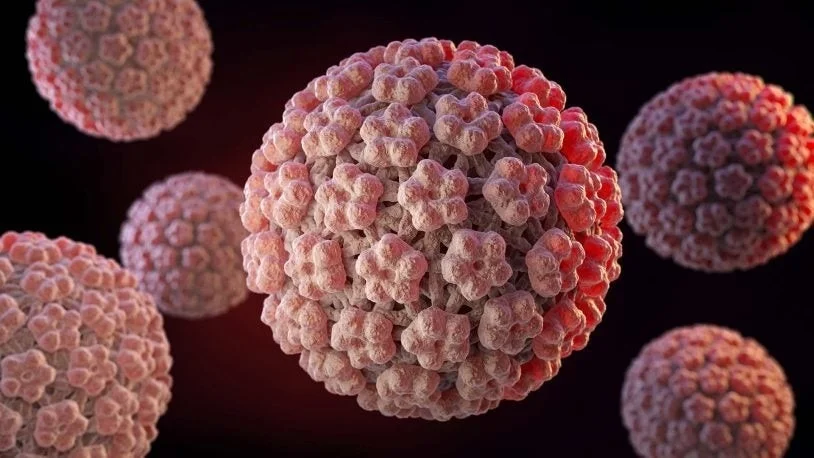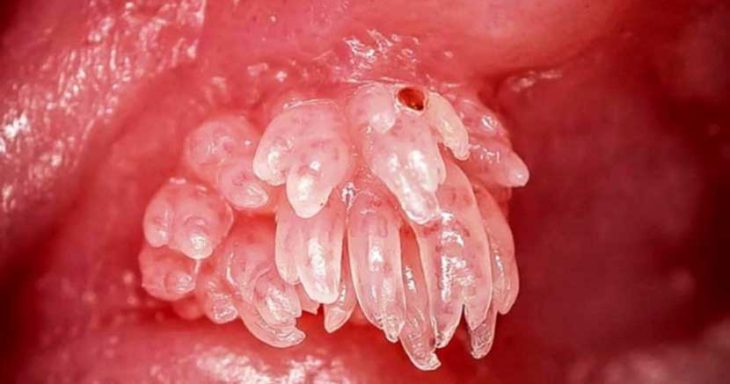HPV is a virus that usually causes abnormal skin or mucous membrane growths and warts. There are over a hundred types of HPV. Of the types of HPV viruses that cause warts and some can cause different types of cancer. It can stay for days and weeks. Very resistant to changes in pH changes.
We with HPV viruses warts that are not software for people with HPV virus usually threaten these, the most important are HPV viruses that are high risk HPV viruses that are faced with a variety of cancers in this disease. Humans cause such things as pharynx and larynx cancer, vaginal cancer, anal cancer, which can occur in both men and women. It is interesting that even other cancers are associated with high-risk HPV viruses. More than 200 HPV genotypes have been found, which are classified into high-risk (HR) or low-risk (LR) groups according to how dangerous they are in cancers. HPV DNA viruses can be found as episomal virions in the cytoplasm or found in the host chromosome. Continuity with some HPV genotypes leads to cervical cancer.

Types of HPV virus:
Low-risk HPV: Most warts that are more common in different parts of the body are of this type (HPV 6 and 11).
High-risk HPV: In many cases where there may be no clinical symptoms, it may not even be visible. are. HPV are even high-risk HPV, but they do not have any clinical virus.
It usually takes a long time for people with high-risk HPV to develop cancer if their body is susceptible and clears the virus, which the immune system usually clears. But environmental factors, genetic factors and nutrition can make the HPV virus turn cancerous faster.
Genotype of oncogenic HPV:
16-18-31-33-35-39-45-51-52-56-58-59-66-68 are dangerous.
One of the most famous low-risk HPVs is virus 6 and 11.
The best way to prevent this virus is vaccination.
There are no drugs in the world for HPV viruses, there are no drugs that can only increase the immune system and even by changing the diet, the immune system can be increased.
vaccination:
All types of HPV vaccines have been approved worldwide since 2006, and the best vaccines are currently Gardasil 4 and 9.
Gardasil 4 protects against genotypes 6, 11, 16, and 18. Besides these, Gardasil 9 also covers five other genotypes, 52-58-45.
4-valent Gardasil: It is prepared from L1 virus, from 10-12 years to 45 years, both sexes can receive this vaccine.
HPV vaccine:
The HPV vaccine is recommended for all teenagers (boys and girls) at age 11 or 12, but I can get the vaccine from age 9.
The number of HPV vaccine doses depends on the age and the health status of our immune system:
Age less than 15 years and with normal functioning of the immune system: two injections should be given at least six months apart.
Age 15 years or older and with normal immune system function: three doses of vaccine should be injected. The second dose is injected one to two months after the first dose and the third dose six months after the first dose.
People with HIV or strong immunity (for example, in patients with other diseases that weaken the immune system), taking into account the age of starting vaccination, should inject three doses of the vaccine.
It is best to try to get all the recommended doses. If you miss a dose, it’s best to check with your doctor about whether you need a dose or not.
In Iran, for people who have already had genital warts, their age is older, 40 to 45 years ago, they say that it is not necessary to be vaccinated, the same Iranian Papillogard that is injected like Cervarix, which covers 16 and 18.
WHO announced that by 2030, based on the proposal, what should be done to prevent high-risk cancers, it is said that 90% of women and men should receive the vaccine and do a pap smear, HPV typing, and PCR to see if they are infected with HPV. or not Because it is a fact that the pap smear is corrected or because of the normal pap smear it is seen that the cells do not change shape, but high-risk HPV and all these are alarm bells. which are mostly in the field of cancer.
The importance of receiving this vaccine and its use are countless. But in general, I can say that this disease is a common disease that can affect a person until the end of his life and thus lead to his death. In general, this vaccine can be summarized as follows:
- Eliminating the possibility of getting involved in HPV viral infections
- Eliminating the possibility of re-infections in natural infections with similar viruses
- Safe vaccination against people with weak immune system.
- The possibility of using the vaccine by patients who have had a previous lesion from HPV.
- Preventing teenagers and other people from contracting genital warts
- Eliminating the possibility of transmission in patients who are high-risk carriers of this virus.
You should keep in mind that this vaccine does not have any therapeutic properties and is only used to prevent or eliminate the possibility of transmission.
Milad Daru Company has produced human papilloma virus (HPV qPCR) molecular detection kits that quantitatively detect papilloma and its various types using Quantitative Real Time PCR technology.
It is designed based on the highly conserved region of the pathogen genome. One of the important and valuable points of these kits is the detection of 14 common types of high-risk human papillomavirus, including types 16, 18, 31, 33, 35, 39, 45, 51, 52, 56, 58, 59, 66, 68. is.
The ability to identify virus regions with a specificity of over 98%
It has a sensitivity of 200-400 copies of the virus genome according to the detected type.
The master mix contains all the ingredients needed for the PCR reaction
No need to add necessary materials to perform PCR test
Guaranteed reproducibility of test results
Compatible with a wide range of real-time PCR devices, the types of which you can access on the site of Milad Daru Company in the products section of the medical equipment section and the selection of rapid diagnostic kits, and access to all types of these diagnostic kits along with their comprehensive information catalog. you have.
References:
Centers of Disease Control and Prevention
Mayo Clinic

Write Your Comment